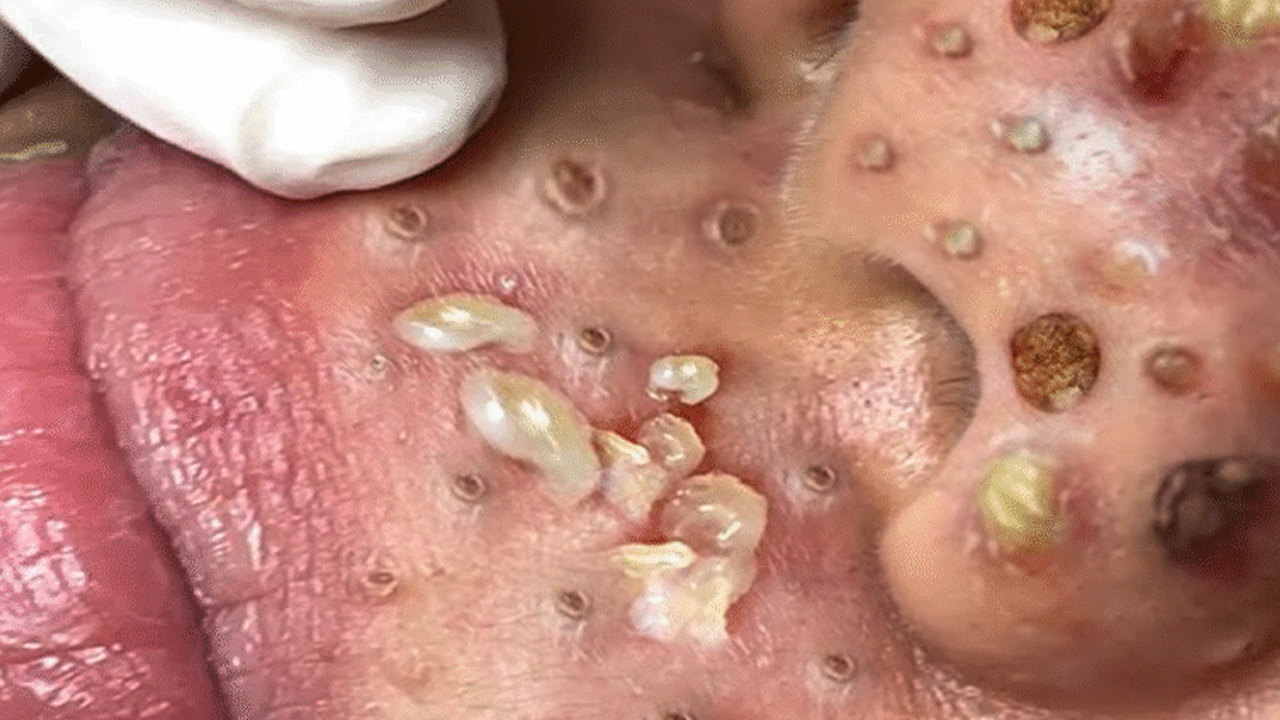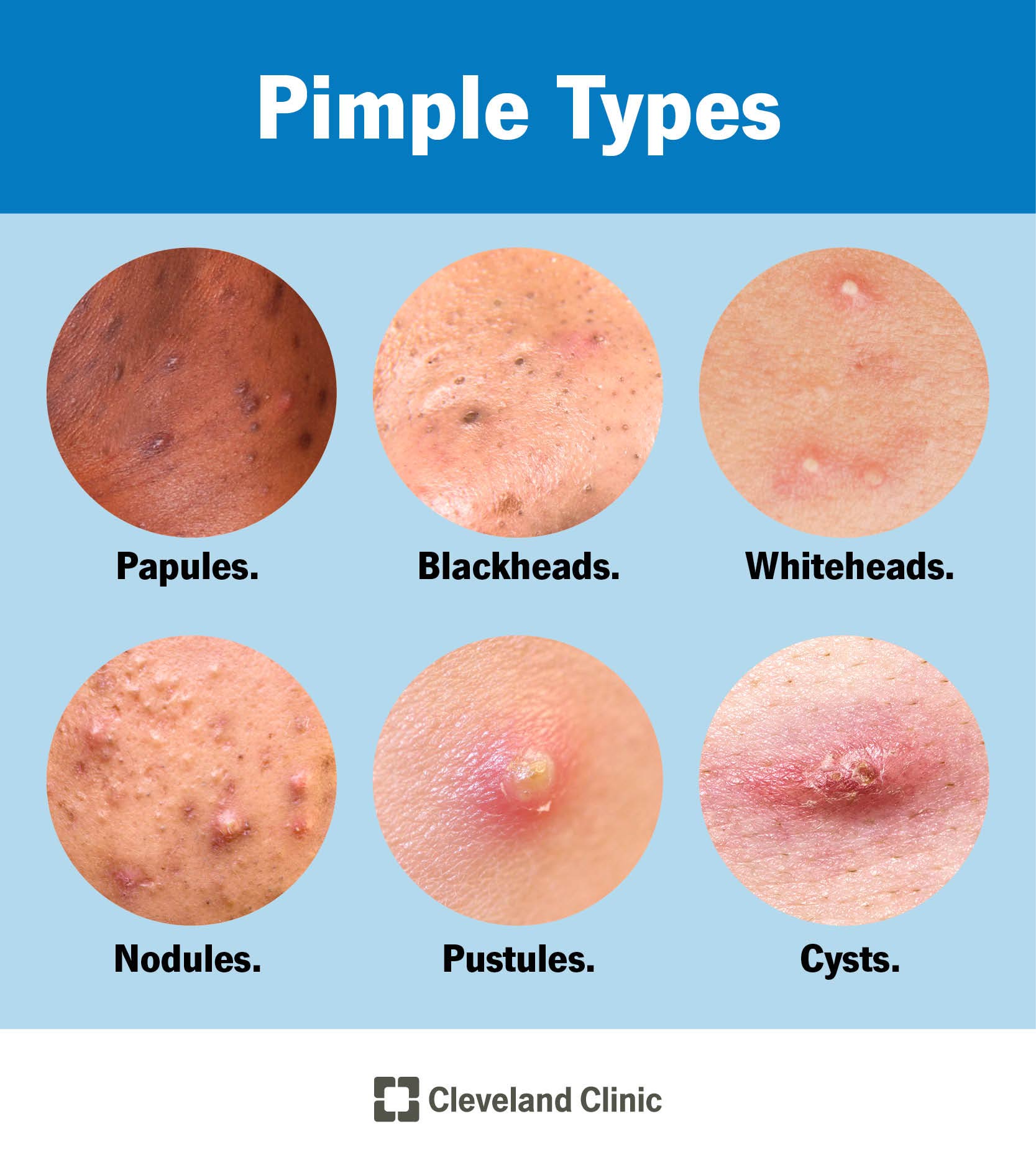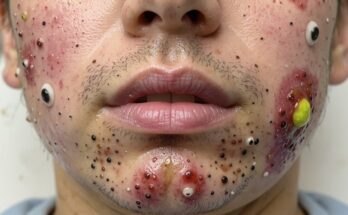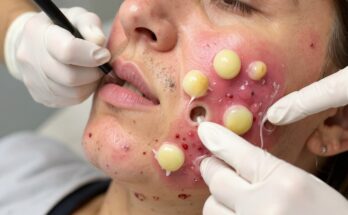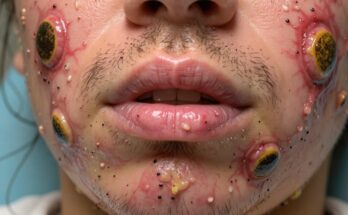Understanding and Managing Pimples: A Comprehensive Guide
Pimples, those pesky blemishes that seem to appear at the most inconvenient times, are a common skin condition affecting almost everyone at some point in their lives. But what exactly are they, and how can we effectively manage them? This comprehensive guide explores the causes, types, treatments, and prevention of pimples.
What are Pimples and How Do They Develop?
The Science Behind the Breakout
Pimples are small, raised bumps on the skin’s surface, often inflamed or discolored. They’re a symptom of acne, a skin disease stemming from clogged or inflamed oil glands (sebaceous glands) and an overgrowth of acne-causing bacteria. These glands, found throughout the body, produce sebum, an oily substance that lubricates the skin and hair. When sebum production increases, combined with abnormal keratin formation (the protein that builds skin, hair, and nails), pores become blocked, leading to pimple formation. This process can be exacerbated by irritants the skin comes into contact with.
The Diverse World of Pimples
Pimples aren’t a one-size-fits-all phenomenon. They present in various forms, each with distinct characteristics:
- Papules: Small, inflamed bumps that may be tender to the touch.
- Blackheads (Open Comedones): Clogged pores exposed to air, resulting in a dark appearance due to oxidation.
- Whiteheads (Closed Comedones): Clogged pores that remain closed under the skin, appearing as small, white or yellowish bumps.
- Nodules: Larger, deeper, often painful lumps beneath the skin’s surface.
- Pustules: Pus-filled pimples often surrounded by redness. Picking at these can lead to scarring.
- Cysts: Deep, painful, pus-filled lesions that can cause significant scarring.
Who Gets Pimples and Where Do They Appear?
Pimples are most prevalent during adolescence due to hormonal fluctuations, but they can affect individuals of all ages, from infants to adults. While the face (forehead, nose, chin, cheeks) is the most common site, pimples can develop anywhere on the body with oil glands, including the chest, back, shoulders, neck, and even less common areas like the eyelids, buttocks, ears, scalp, armpits, and genitals.
Diagnosing and Treating Pimples
Diagnosis: When to Seek Professional Help
While most pimples are easily recognizable and don’t require a medical professional’s diagnosis, seeing a doctor is advisable for severe cases (cystic acne) or sudden, significant outbreaks in adults over 50, as these may indicate an underlying medical condition. Your healthcare provider may consider factors like stress levels, family history, and menstrual cycles (for menstruating individuals) during the diagnosis.
Treatment Options: From Over-the-Counter to Prescription
Numerous treatment options exist, ranging from simple home remedies to prescription medications:
Over-the-Counter Treatments:
- Benzoyl peroxide: Kills bacteria and reduces inflammation.
- Salicylic acid: Dissolves dead skin cells, preventing clogged pores.
- Azelaic acid: Reduces inflammation and kills bacteria.
- Retinoids (Vitamin A derivatives): Prevent clogged pores, though they may cause skin dryness or peeling.
Prescription Treatments:
For more severe acne, a dermatologist may prescribe antibiotics (to combat bacterial infection) or oral hormonal therapies. Other advanced treatments include chemical peels, laser skin resurfacing, and microdermabrasion. It’s crucial to consult a healthcare professional before initiating these treatments, as they can cause irritation or worsen acne if used improperly.
Home Remedies: Gentle Approaches to Pimple Management
Several home remedies may offer relief, but always consult a doctor before trying them, especially if you have sensitive skin or allergies. These include:
- Tea tree oil: Possesses antibacterial properties.
- Sugar or salt scrubs: Gently exfoliate the skin.
- Green tea: Reduces oil production and acts as an antioxidant.
- Warm compresses: Increase blood flow, promoting healing.
- Ice: Reduces inflammation and pain.
Important Note: Resist the urge to squeeze or pop pimples! This introduces bacteria, leading to infection, inflammation, and potentially scarring.
Prevention and Long-Term Management
Preventing Breakouts: Proactive Skin Care
Preventing pimples entirely can be challenging, especially during hormonal changes. However, consistent good skin hygiene significantly reduces the risk:
- Wash your face gently twice daily with a mild cleanser.
- Use a non-comedogenic (non-acnegenic) moisturizer.
- Remove makeup thoroughly before bed.
- Wash your hair regularly, keeping products away from your face.
- Avoid touching your face unnecessarily.
Living with Pimples: Expectations and When to Seek Help
Pimples often subside in early adulthood, but some individuals experience them throughout their lives. If you experience a large outbreak, severely painful or discolored pimples, or if you are concerned about the appearance or severity of your pimples, consult your healthcare provider.
Differentiating Pimples from Other Skin Conditions
It’s vital to distinguish pimples from other skin conditions like boils (furuncles), cold sores (caused by the herpes simplex virus), and genital herpes. These conditions differ significantly in their causes, symptoms, and treatments. Boils, for example, are deeper, more painful, and don’t respond to typical pimple treatments. Cold sores and genital herpes are highly contagious viral infections, unlike pimples.
A Final Note
While pimples are a common and often manageable condition, their impact on mental health shouldn’t be underestimated. Don’t hesitate to seek professional help if your pimples significantly affect your self-esteem or cause distress. A proactive approach to skin care, combined with appropriate treatment, can significantly improve your skin’s health and well-being.
